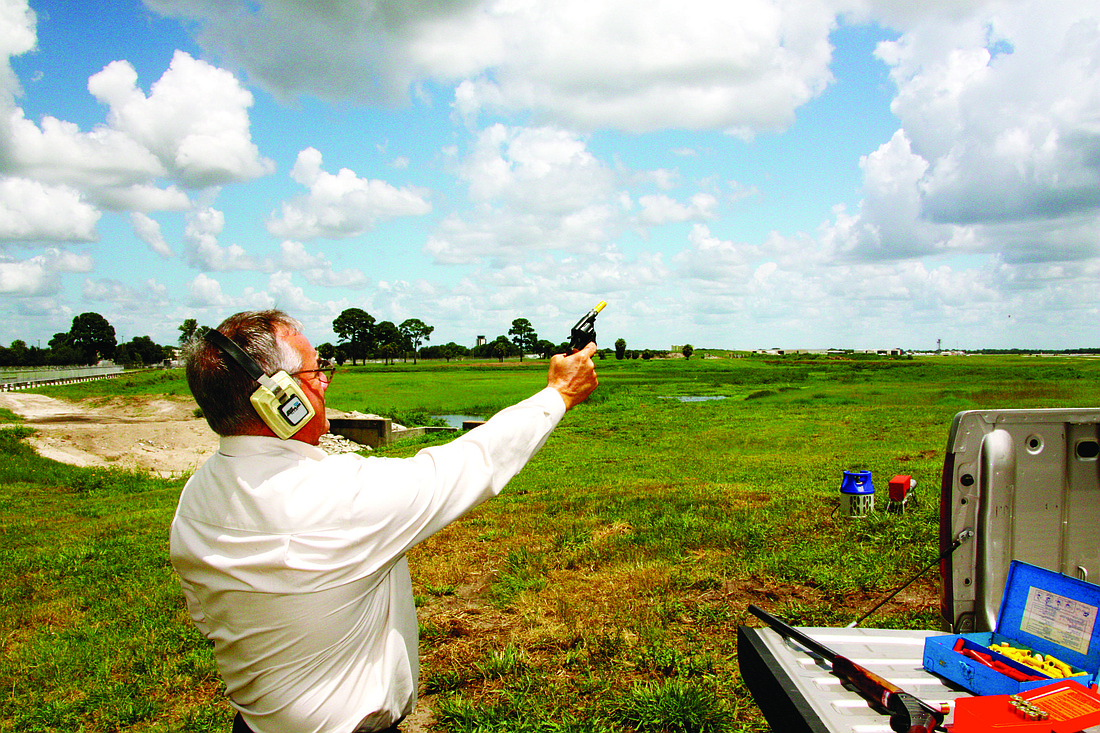- April 19, 2024
-
-
Loading

Loading

There’s an old pilot’s saying: “Flying is hours of boredom mixed in with a few seconds of absolute terror.”
Any pilot will admit that birds are responsible for a few of those seconds of terror. Impacting a bird in flight or ingesting a flock in an engine on takeoff or landing — the highest-risk portions of flight — can have catastrophic consequences. At Sarasota-Bradenton International Airport (SRQ), it’s up to Supervisor of Airport Operations Roger Widrick to make sure the flying public and those feathered cruise missiles never meet. And, according to Federal Aviation Administration (FAA) data, Widrick’s program is a success.
Bird strikes are down 39% this year at SRQ, according to the FAA bird-strike database. And although SRQ has never had a fatal bird-strike incident, several close calls, such as the 2008 aborted take-off of a Delta airliner at SRQ after hitting several laughing gulls, highlight the seriousness of the threat to area aviation.
“Our job is to protect the flying public and limit the damage to aircraft,” said Widrick, who has led the wildlife hazard-management program at the airport for 25 years. “There are a lot of birds in the area. Considering what we’re up against, I’d say we’re doing pretty good.”
Widrick leads a comprehensive program to lessen the chance of bird strikes on aircraft, which includes habitat modifications; harassment techniques, such as firing pyrotechnics; and propane cannons to scare birds away from runways. Widrick said he and his team of six constantly vary harassment techniques and patrol the airfield at regular intervals to recognize new species as soon as they arrive.
“You don’t want them to get too comfortable here,” Widrick said. “You want to convince the wildlife that the airfield is a bad choice of places to live.”
SRQ reported 25 bird strikes in the past 12 months, compared with 41 in the prior year. Widrick said the pressure on airlines and airports to report bird strikes increased significantly after a flock of geese downed a commercial jetliner in 2009 in New York.
“Nationwide we’ve seen a false jump in the number of bird strikes reported the past few years,” Widrick said. “It’s mostly because more people are reporting now.”
Widrick said the 2009 Hudson River incident prompted the FAA to impose stricter regulations and oversight on wildlife-management programs at airfields across the country. Wildlife hazard-management programs, like the one at SRQ, were also given more leeway to deter all species from living in the airfield environment.
Widrick said an FAA inspector evaluates his operation each year, and his staff receives annual training from a USDA wildlife expert. An FAA inspector posted in Atlanta monitors SRQ’s rate of bird strikes.
Common birds at SRQ include great blue herons, great egrets, wood storks, cattle egrets, ospreys and gulls. Widrick reports that he has also dealt with coyotes, foxes, bobcats, alligators and even the occasional swarm of bees.
“You see a lot when you work this job for 25 years,” Widrick said.
Wildlife experts report that increased development in Sarasota County has limited the amount of habitat available to birds and other wildlife, making the airport an attractive option for many species.
“The fact that we have a seven-mile perimeter fence keeps a lot of predators out,” Widrick said. “And species recognize that this is sort of a refuge. We have to convince them otherwise.”
His team begins every morning with a runway inspection to check for debris and wildlife. Throughout the day, the perimeter fence is checked every two hours for breaches, and Widrick and his team are always on call to respond to wildlife interferences with airfield operations.
“The other day the tower called to tell us there was a turtle on the runway,” Widrick said.
SRQ was originally built in the 1930s and was later expanded as a military airfield before it was turned back over to the county after World War II. Not a lot of thought was put into bird-strike mitigation when the airfield was originally designed, Widrick said.
Techniques such as mowing the grass below 5 inches in height to give birds fewer places to hide and constantly clearing away trees and foliage that can be used for nesting are effective, Widrick said.
Widrick emphasized the importance of covering trash containers on airfield grounds and encouraging the public to not feed birds.
“I’ve found that as long as people understand that we’re doing these things to save lives, they’re willing to help,” Widrick said.
By the numbers
10 pounds — Average weight of one Canada goose
172,000 pounds — Weight of an Airbus A320 jetliner
155 — The number of lives Capt. “Sully” Sullenberger saved when he glided a US Airways Airbus A320 jetliner to a crash landing on the Hudson River after a collision with a flock of Canada geese knocked out both of the jetliner’s engines.
41 — Bird strikes reported at SRQ from August 2011 to August 2012
25 — Bird strikes reported from August 2012 to August 2013
$400 million — Amount in damage to U.S. aircraft annually from bird strikes, according to FAA estimates
More than 200 — The number of people killed by bird strikes to aircraft since 1988
Contact Nolan Peterson at [email protected].